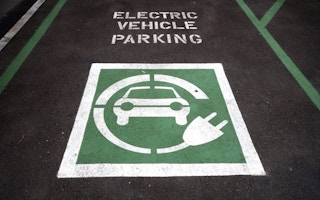The case for electric cars is more compelling than ever, given the global commitment to improving air quality and reducing pollution-related costs, especially with the move towards achieving COP 21 goals.
Singapore is steadfast in this commitment too, as evident from Singapore’s vision for a “car-lite” city state coupled with the decision earlier this year to roll out 2,000 charging stations island-wide and the recent announcement to create an all-electric taxi fleet to further decarbonise the transport sector.
Electric vehicles (EVs), especially cars and buses, are key enablers to help close the gaps in Singapore’s commitments to COP 21, by reducing or eliminating the use of the internal combustion engines on Singapore’s roads.
In this context, it is important that current policies affecting the ownership and deployment of such vehicles be either tweaked, revamped or extended to ensure that these low-carbon (or zero-emission) technologies operate under a policy regime that promotes a level playing field - versus the incumbents - for all modes of transportation.
Emissions from the transportation sector are one of the largest contributors to urban pollution. Even with the technological improvements of engines and emission standards for conventional fossil fuel engines, tailpipe emissions are constantly under regulatory watch.
This is the reality: according to Singapore’s National Climate Change Secretariat’s business-as-usual scenario, the transport sector will contribute 14.5 per cent of greenhouse gas emissions (GHG) in Singapore by 2020.
Emissions reduction in the key transport sector is therefore crucial to Singapore’s commitment to reduce GHG emissions per GDP dollar by 36 per cent by 2030, compared to 2005 levels.
“
Electric vehicles…are key enablers to help close the gaps in Singapore’s commitments to COP 21, by reducing or eliminating the use of the internal combustion engines on Singapore’s roads.
This begs the question: does Singapore have the right framework and infrastructure to ensure a level playing field for adopters of EVs?
Currently, EVs and plug-in hybrid electric vehicles (PHEVs) face disadvantages because of the current formulae used to calculate Carbon Emission-Based Vehicle Scheme (CEVS) rebates and road taxes.
It is important to understand that EVs offer many advantages, namely it features the lowest carbon emissions among car models in the market.
Hence, a level playing field in the CEVS can only be created by granting an equitable i.e., levelling up, incentive to EVs compared to higher-emitting hybrid car models. The emissions envelope (i.e., generation-to-end-use) of EVs are expected to fall further in the coming years as Singapore continues to expand the use of natural gas and renewables for electricity generation, justifying the need for more banding in the lowest emissions end of the CEVS.
Currently, the CEVS aims to differentiate vehicles based on the CO2 emissions per kilometre.
However, it does this quite poorly since it cannot distinguish in advance between a vehicle that is driven primarily in stop-and-go CBD traffic (such as a delivery vehicle) and one that undertakes uninterrupted highway journeys (such as regular commutes across the island).
We believe one solution around this is to consider scrapping the capital expenditure-based CEVS and replacing it with operating expenditure-based schemes.
A key advantage of replacing CEVS with an operational expenditure-based scheme is that it eases traffic congestion by increasing the variable cost of driving versus using public transport.
The existing cost structure of car ownership is too heavily weighted by fixed acquisition cost, which encourages people to use their cars even for trivial journeys, because variable costs linked to fuel and parking are so low.
Alternatively, the Preferential Additional Registration Fee (PARF) value of cars which received the CEVS rebate should be based on the Additional Registration Fee (ARF) value before the rebates, not after.
Further suggestions to give EVs deployment in Singapore a better chance:
Set up a regional centre for electric vehicle testing and inspection
An opportunity to further reduce our GHG emissions while leveraging the electrification of buses and cars is to establish a regional testing centre with full test facilities for battery and charging infrastructure that would ensure that all vehicles are tested by one common standard and process.
This will help accelerate the deployment of EVs, while growing regional demand will ensure the centre is economically viable.
Invest in an electric bus fleet and supporting infrastructure
Although the government owns the entire public bus fleet, it does not have to undertake the construction and operation of the charging stations itself. It can tender the charging facilities to private operators to reap the benefits such as low cost and high quality of service of market competition
The government should also lead a cost-benefit study with participation from the industry to determine the additional requirements for power distribution infrastructure and examine mechanisms through which such costs can be socialised among users. The study could be carried out as a test bed whereby data of key matrices could be collected and analysed to ensure future adoption.
Future-proofing buildings and infrastructure
Building codes such as the BCA Green Mark already take into account EV parking lots upon building completion, but fail to promote easy installation of EV charging infrastructure post-building completion.
To ensure a future-ready building infrastructure and the movement towards a Smart Nation, buildings codes should include the needs of EV charging for both expected current population and future expansion of EV-ready car lots. Green Mark can evolve to promote this change and could allocate more points for EV-readiness.
Dr Sanjay C Kuttan is the white paper chair and council member of the Sustainable Energy Association of Singapore, and program director, Energy Research Institute @ NTU (ERI@N), Nanyang Technological University.
His white paper, Creating a Level Playing Field for Electric Vehicles in Singapore, can now be accessed and read in full on the SEAS website.









